Creator of a single machine gun
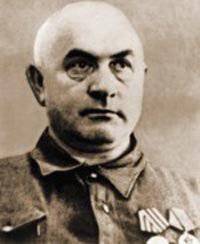 The names of many talented domestic gunsmith designers until recently were covered in mystery. Information about the activities of these people has never gone beyond state enterprises, research institutes and military units. This fully applies to Georgiy Semenovich Garanin - the designer of the Design Bureau of the Degtyarev Kovrov Arms Plant. Thanks to Garanin’s talent in 1940 - 1980's, numerous samples of small arms and air cannon appeared. weapons.
The names of many talented domestic gunsmith designers until recently were covered in mystery. Information about the activities of these people has never gone beyond state enterprises, research institutes and military units. This fully applies to Georgiy Semenovich Garanin - the designer of the Design Bureau of the Degtyarev Kovrov Arms Plant. Thanks to Garanin’s talent in 1940 - 1980's, numerous samples of small arms and air cannon appeared. weapons. Georgy Semenovich Garanin was born in 1913 year in the village of Misailovo, Kovrovsky district, Vladimir province. His father worked as a repairman on the railway. Since the beginning of World War I, my father was mobilized into the Russian army. During an unsuccessful campaign for the Russian Armed Forces 1915, he is captured, where he soon dies.
Georgy Garanin, left without a father since childhood, had to pave the way for life himself. After graduating from a seven-year school and the Kovrov railway technical school, Garanin worked for some time at the Kaluga plant of the People's Commissariat for Railways, and then returned to Kovrov and in July 1933 entered as a designer at the Kirkizh weapons plant. In 1936, a young specialist was called up to serve in the Red Army, where Garanin, together with another gunsmith A. Konstantinov, developed a device for recharging wing aviation machine guns. In January 1939, after completing his military service, Garanin, together with Konstantinov, was hired at TsKB-2 as a designer, and in October 1940 he was transferred to the newly created KB-2.
Under the direction of the oldest Soviet gunsmith designer V. Degtyarev, George Garanin develops an anti-aircraft tripod adopted for armament for the 7,62-mm machine gun DS-39. However, the full creative talent of Garanin was revealed during the Great Patriotic War. One of his first works in the "thunderstory forties" was the anti-tank rifle PTRD. In KB-2, on the orders of Degtyarev, N. Bugrov, S. Krekin, A. Dementyev and G. Garanin entered the design team. Already after 22 of the day after the start of the design, the prototypes entered the field tests. The Kovrov gunsmiths created the PTRD 14,5-mm anti-tank gun, which was immediately adopted by the Red Army.
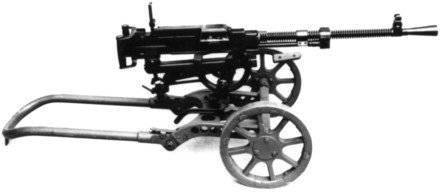
7,62-mm machine gun Goryunova SG-43M on a wheel machine design Garanin.
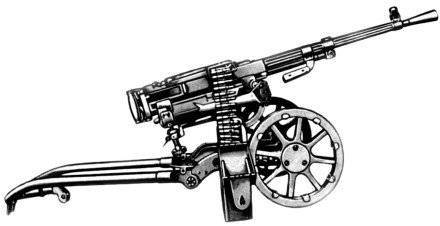
7,62-mm machine gun Goryunova SGM on a wheel machine design Garanin (right view)

7,62-mm automatic carbine design Garanin. Prototype 1945 g. Incomplete disassembly.
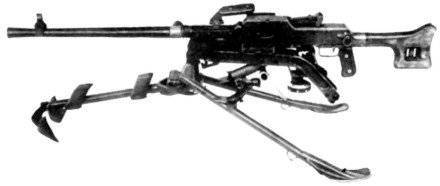
7,62-mm single machine gun Garanin. The battalion version on the machine design Markov. 1957 Prototype
A landmark event in the life of Garanin was the work on the improvement of the machine for the 7,62-mm machine gun Goryunova rev.1943 g. (SG-43). This simple, reliable and relatively light machine-gun machine gun played a major role in ensuring the offensive actions of the Soviet troops in 1943-1945. But the wheel machine design Degtyarev caused a lot of complaints. Already in 1944, the designers of KB-2 G.Garanin and V.Seleznev developed for SG-43 a simplified wheeled machine with 29, 5 kg. This machine, although the 3 kg and weighted the total mass of weapons, at the same time showed a much higher level of reliability during operation in difficult conditions. In addition, the designers managed to reduce the height of the line of fire in a ground position compared to the Degtyarev machine by 43 mm and increase the angle of elevation from 18 to 32 degrees, which significantly increased the fighting qualities of the weapon itself. The upgraded Garanin-Seleznev machine design could be used for both ground and anti-aircraft firing. Since August 1944, the new machine for SG-43 has been mastered in mass production.
In 1943, Garanin developed a prototype anti-aircraft tripod for anti-tank rifles PTRD and PTRS, turning them into air defense, although the low practical rate of fire of this powerful weapon made it unsuitable for dealing with such rapidly moving targets like airplanes.
In the years of the Great Patriotic War, Garanin was one of the first gunsmiths to begin designing and developing a new weapon system for the 7,62-mm “intermediate” cartridge of the 1943, self-loading carbines, machine guns and light machine guns, designed to replace all other small arms in the platoon level. This work George Semenovich gave more than ten years of his life.
Already in 1944-m, Garanin constructed a prototype of a self-loading carbine, and the next year - an automatic carbine with an “intermediate” cartridge. Automatics of both carbines worked on the principle of removal of powder gases from the barrel. Locking was carried out by two symmetric war bolt larvae. The design of the automatic carbine was provided for the presence of a folding two-legged bipod to stabilize the weapon when firing continuous fire. The mass of the self-loading carbine was 3,36 kg, and automatic - 4,11 kg; magazine capacity - 10 and 30 cartridges, respectively. The firing rate of the automatic rifle did not exceed 800 rds / min.
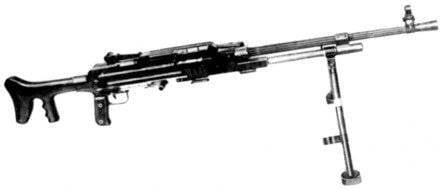
7,62-mm single machine gun Garanin. Mouth option. 1958 Prototype
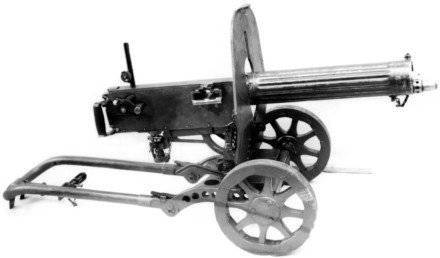
7,62-mm machine gun "Maxim" on a wheel machine design Garanin. In the version for shooting at ground targets. 1944 Prototype
The numerous shortcomings of the first Kalashnikov assault rifle and the Simonov carbine led to the fact that in accordance with the GAU task in 1950, the national design bureaus begin to work out a unified sample of the carbine karabiner chambered for by the 1943 g., Which would combine the combat functions of the AK and self-loading carbine SKS. In Kovrovsky OKB-575 (as KB-2 came to be called), the three draft designs of such weapons were worked out by the designers G.Garanin, A.Konstantinov and I.Slostin together with S. Bryntsev. Georgiy Semenovich presented two samples. In the prototype of the Garanin automatic rifle, the automatics worked on the principle of removing powder gases from the bore, the locking was carried out by tilting the bolt down, the first project had a hammer mechanism, and the second was a trigger mechanism. But these works have not gone beyond the prototype.
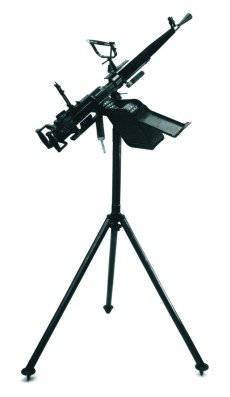 7,62-mm machine gun Degtyarev DS-39 on the Garanin anti-aircraft machine-tripod.
7,62-mm machine gun Degtyarev DS-39 on the Garanin anti-aircraft machine-tripod.Subsequently, Garanin switched to designing a light machine gun for an “intermediate” cartridge, since in 1955, GAU made a principled decision to combine the tests of a light machine gun and a light machine gun in one competition. Together with his son, V.A. Degtyarev, Georgy Semenovich designed a light machine-gun for belt feeding. In January-February 1957, comparative field tests took place, where samples of experimental Kalashnikov, Korobov, Konstantinov automata met, as well as for the first time taking part in testing Kalashnikov light-duty (machine-feed) machine guns - C-108-M, Korobova with ribbon -shop food - TKB-516М, as well as Konstantinova with store food - 2B-П-40. Although the main criterion of the new competition was the development of a weapon complex machine + manual machine gun, unpaired samples of small arms were allowed to be tested: Simonov АС-104-П-56 machine guns and Degtyarev-Garanin machine gun KB-P-790.
The automatics of the KB-P-790 machine gun worked on the principle of using recoil of a semi-free shutter with a lever retarder. The chamber had revelly grooves. Feed band (used standard tape machine gun RPD 100 cartridges). After the revision of this sample, he improved the reliability of the operation of components and mechanisms in difficult conditions; increased vitality; pollution of the moving parts of the automation with a powder carbon has decreased; the possibility of self-ignition of the cartridge has decreased; weapons become easier to use. And yet, as a result of very hard ground tests, the following was established: “... Degtyarev-Garanin machine guns showed high reliability in various operating conditions, but have low survivability of the receiver and other parts, as well as a number of other significant shortcomings, the elimination of which requires serious alteration of samples. In addition, the machine gun Degtyarev-Garanin does not have a twin machine. Therefore, the revision of this machine gun should be considered inappropriate. "
However, this failure did not break George Semenovich. Later, already working independently on the posts of lead designer and chief designer of the project, Garanin developed a field machine for the 14,5-mm heavy machine gun CPV-44, which passed field testing. Subsequently, the designer worked on the creation of small arms for a rifle cartridge, including various variants of single machine guns.
In 1955, the theme for the single machine gun was again included in the work plans of OKB-575, and after the approval of 31 in December 1955 of the tactical and technical requirements of the GAU on “7,62-mm single company and battalion machine gun for a rifle cartridge”, its design began. In Kovrov, the development of a single machine gun was again initiated by the lead designer Garanin. 20 June 1955, the Directorate of small arms and mortar weapons GAU considered the presented draft designs of single machine guns. The automatics of the Garanin machine gun were based on the principle of recoil of a semi-free shutter using a lever retarder. The supply of cartridges was carried out from an open type metal special tape. In the battalion version of the machine gun attached to the tripod machine design G.Markova.
When considering the project on a number of characteristics, deviations from TTT were identified. According to many experts, the automation scheme with a semi-free locking incorporated into the project basis made it possible to obtain a relatively simple sample to be made, so a decision was made on the feasibility of working out a single Garanin machine gun.
Factory and field tests of 7,62-mm single (company and battalion) light machine guns of the Garanin design were carried out in the first half of 1957. The ground test report stated: “The machine gun is equipped with 150 suspended ammunition cartridges and ordinary 200 cartridges for cartridges. All cartridge boxes are light alloy. Cartridge belt for a machine gun - experienced with direct filing of the cartridge (not suitable for regular RP-46 and SGM machine guns). By weight, the Garanin machine gun in the company version (8,56 - 8,61 kg) and the battalion (15,06-15,11 kg) satisfies the TTT ... In the accuracy of the fight, the Garanin machine gun does not satisfy the TTT. In terms of reliability with dry parts, dusting and five-day shooting without cleaning, Garanin’s machine guns did not satisfy the TTT ... In case of normal operation, the machine gun satisfied the TTT (0,08% delays were received, no more than 0,2% is allowed). By the self-ignition time of the cartridge in the chamber (from 7 to 13 seconds after 350-400 shots) the machine gun did not satisfy the TTT (at least 10 seconds). By survivability receiver (breakage rivet after 17280 shots) protivootskoka spring (9322, 13660 and 17280 shots), the bolt fuse flies (15 007 shots), the handle reloading (spring loosening after 900 shots) and receiver lid spring (crack after 4000 shots ) the machine gun did not satisfy the TTT ".
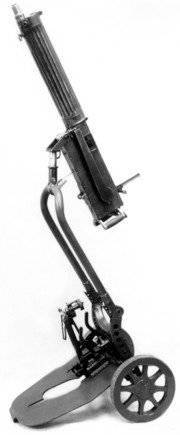 7,62-mm machine gun "Maxim" on a wheel machine design Garanin. In the version for anti-aircraft shooting. 1944 Prototype
7,62-mm machine gun "Maxim" on a wheel machine design Garanin. In the version for anti-aircraft shooting. 1944 PrototypeIn conclusion, according to test results, the test site noted: “7,62-mm lightweight single (company and battalion) Garanin machine gun on a Markov tripod machine for reliable operation in various conditions of operation, accuracy of combat, survivability of parts, cartridge self-ignition time, safety in circulation and a number of other operational qualities (severe pollution and smoke, inconvenience of changing the barrel, etc.) does not satisfy the TTT GAU and is inferior to the Nikitin machine gun previously recommended for refinement. Therefore, the revision of the machine gun Garanin should be considered inappropriate. "
Already in the same year, 1957, Garanin develops another scheme for a single machine gun with “hard locking” for SGM standard ribbon. The automatics of the new Garanin machine gun worked on the principle of removal of powder gases through the transverse hole in the wall of the barrel. The barrel was locked by turning the bolt, which has two lugs. The tape was fed with a swinging lever, driven by two rollers, rolling along spiral spatial profiles located on the bolt carrier. On the slide frame, the cartridge extractor from the tape was also mounted, lowered onto the dismounting line with a reducing comb. The machine gun was installed, like its previous version, on a tripod machine designed by G. Markov. A sample of the machine gun was tested several times, including at the test site and at an industry research institute. According to the results of the tests, he was repeatedly refined. To reduce the weight, some of its parts were made from light high-strength aluminum alloys and from titanium.
24 July 1960 of the year The State Committee for Defense Technology makes a decision: "... Due to the fact that 7,62-mm single OKB-575 machine gun for a rifle cartridge doesn’t have any advantages over similar machine guns of Nikitin's design and Kalashnikov's design has ... the management considers the conduct of field tests of this machine gun impractical ... According to the decision of the USSR State Committee on Defense Equipment, the OKB-575 is obliged to stop further work on the 7,62-mm single machine gun for rifle Atronach ... "
Later, Georgy Semenovich took part in the creation of various types of aircraft guns, and after changing the direction of the design bureau’s work, Garanin developed several important components and assemblies on a new rocket theme. In 1967, Garanin was transferred to the Kovrov Mechanical Plant (KMZ), where he continues to work on the design of small arms.
In 1987, George Semenovich Garanin retired. For his selfless work, he was awarded the medals "For Labor Valor", "For the Defense of Moscow", "For Valiant Labor in the Patriotic War 1941-1945." Assessing the role and importance of Garanin's works, it should be especially noted that his contribution to the improvement of domestic automatic small arms is invaluable. The level of development of small arms has been achieved largely due to the more than fifty years of activity of Georgy Garanin.
Information